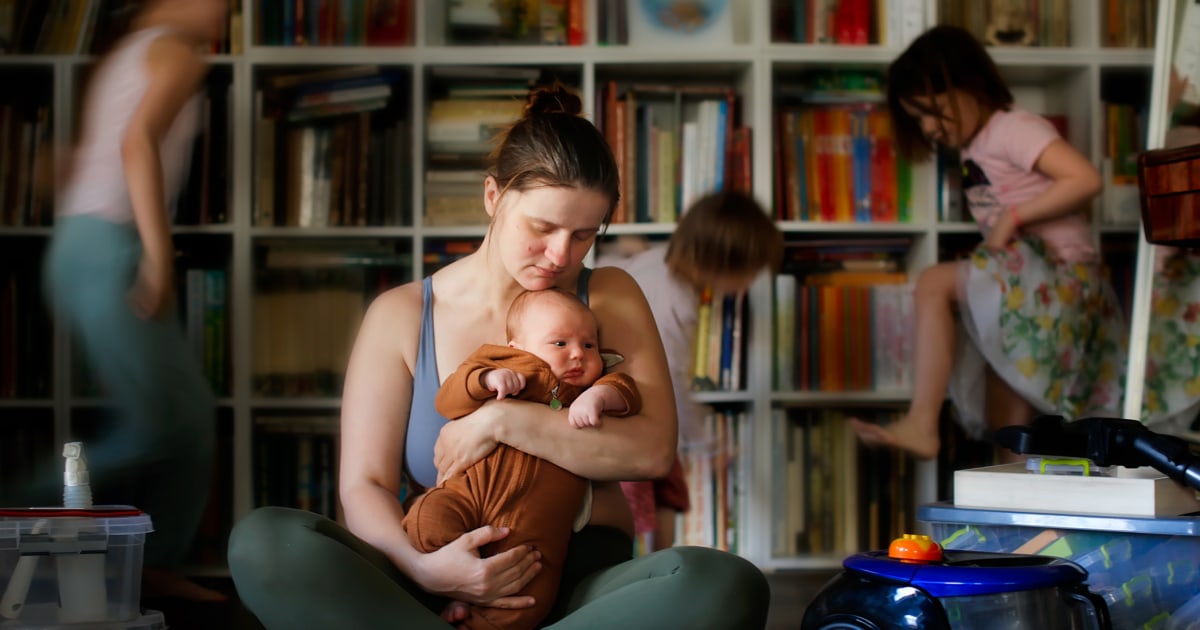Jobs
Friday’s job report underscores the severity of America’s child care crisis

The summary
- According to the Bureau of Labor Statistics, an estimated 69,000 employees reported being absent from work in August because of child care problems — matching a record for that month and continuing a post-pandemic trend.
- This week, GOP presidential candidate Donald Trump and his running mate, Sen. JD Vance of Ohio, addressed the growing child care crisis, though Vance offered more details.
- In February, Vice President Kamala Harris announced steps designed to reduce the cost of child care through the Child Care & Development Block Grant (CCDBG) program to lower payments for families that participate in it.
- The pandemic has upended the ability of many parents to locate and/or pay for child care options.
Friday’s job report showed unmistakable signs of a weakening labor market.
Buried in the report was another warning about an exploding problem now being vigorously debated ahead of November’s election.
According to the Bureau of Labor Statistics, the share of Americans who were absent from work because of child care difficulties matched the all-time record for August. While the dataset has shown large monthly swings and is on a largely downward trend, it remains well above the peaks seen in the pre-pandemic period.
At the same time, employment in child care services has not been nearly enough to match the demand, according to Julia Pollak, chief economist at ZipRecruiter, who highlighted the statistic in a note following Friday’s job report.
“There’s a market failure,” Pollak told NBC News in a follow-up interview.
The issue largely stems from the havoc created by the pandemic, which prompted many child care facilities to shut down, Pollak said. Even after state-mandated closures were lifted, many of these facilities were not able to recover financially from the impact of the shutdown or could not find or afford replacement staff.
Consumer payments for child care are up at least 32% since 2019, a recent Bank of America study found.
Meanwhile, a growing share of families are opting to homeschool their children, either by choice or by force, for instance, as a result of inadequate teaching staff. Pollak said this creates a vicious cycle by which schools are then forced to consolidate their resources even further, forcing other families with fewer financial or social support options into making difficult child care decisions.
Pollak cited a situation in her own school district that has seen a teacher shortage lead to a reliance on a series of fill-in instructors.
“Parents are outraged that they’re cycling through different substitutes,” she said. Without that stability and proper teacher ratios in place, many parents “are looking for exits.”
An additional 150,000 said they worked part-time due to child-care problems, an all-time record for August and the third highest figure on record according to the BLS.
The cost of child care may prove a pivotal issue for voters in November, especially in the crucial swing states that Vice President Kamala Harris and former President Donald Trump need to secure an electoral victory.
Friday’s data comes on the heels of Trump and his running mate, Sen. JD Vance of Ohio, both addressing the subject of child care.
During an appearance at the Economic Club of New York on Thursday, Trump suggested that revenue from his plan to impose tariffs on goods entering the United States would be so large that child care costs would no longer be a concern for Americans. Economists have cast doubt on both the likelihood and successful implementation of uniform tariffs.
Vance has painted a more detailed picture of how child care issues might be addressed, arguing that current policies favor more well-off families where both parents work by choice, sharing on X a 2021 survey showing that compared with parents without a college degree, those with ones are more in favor of both parents working while relying fully on child care.
However, the same chart showed that overall, both educated and less-educated parents favor one parent staying at home.
Still, Vance called universal child care “a massive subsidy to the lifestyle preferences of the affluent over the preferences of the middle and working class.”
This week, Vance suggested to far-right commentator Charlie Kirk that the government should be encouraging family members to serve as child care support, echoing remarks he’d previously made calling for grandparents or stay-at-home parents to receive a “credit” or a “check” for child care, though he did not offer details on how such a plan would work.
In a follow up post on X on Thursday, Vance elaborated that current federal and state policies are “forcing” certain family models.
“If you open up kinship and other options for families, you will relieve some pressure on the day care system in this country,” he said.
He also criticized Harris’ approach, which he suggested merely involved throwing more money at the problem.
“You can’t just write a check if there aren’t additional providers,” Vance wrote, adding that he favored lifting health and safety licensing restrictions that may be impeding alternative child care options, like churches, from opening.
In February, Harris announced steps designed to reduce the cost of child care through the Child Care & Development Block Grant (CCDBG) program by offering greater incentives to states, which administer the program, to lower payments for families that participate in it.
Both Vance and Harris have expressed support for raising the child tax credit. Harris’ running mate, Minnesota Gov. Tim Walz, enacted the most generous child tax credit in the country earlier this year, though it is somewhat narrowly tailored.
In a recent survey of parents of young children in Georgia, 8 in 10 respondents said inadequate child care impacted the way they work, while almost 45% said child care issues had resulted in either partner turning down a job altogether. According to the Economic Policy Institute, Georgia’s annual cost of child care — $8,530 for infants and $7,306 for 4-year-olds — surpasses even the average cost of college tuition in the state.
Similar issues plague Pennsylvanians. Child care advocates say that almost 10% of the state’s day care sites or home-based programs have shuttered since the pandemic. Even the state’s subsidized child care program has seen lower enrollment, with more than 11,000 fewer children participating, according to budget figures.
Vance, in his most recent message on X, was responding to Hannah Anderson, an author and Bible teacher. In her initial series of posts, which addressed Vance’s response to Kirk, she said Vance “inaccurately defines the problems families face“ and therefore “offers solutions that make no sense.”
“Most people would naturally pick family to care for their kids if they can,” Anderson said. “Needing to use non-familial childcare means that they’ve most likely already tried that option.”
She added that economic forces and lack of worker power have limited Americans’ choices.
“Especially among the working class, higher cost of living + diminished workers’ rights means that family members can’t care for their children b/c they’re working at the mercy of employers,” she wrote. “Unfortunately, corporate interests & family interests are often opposed.”








